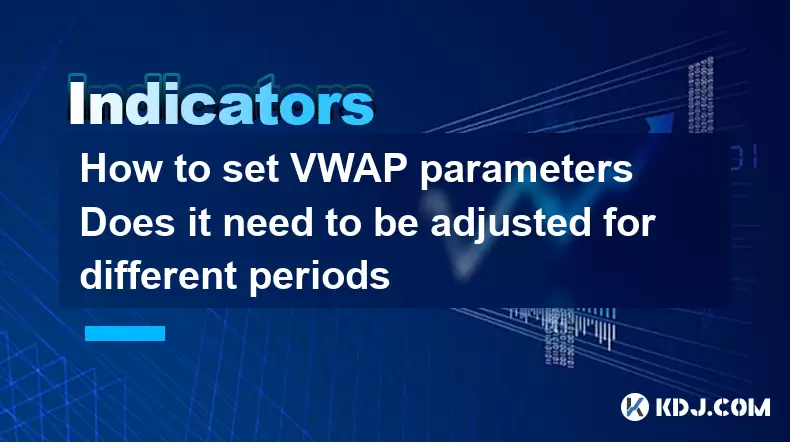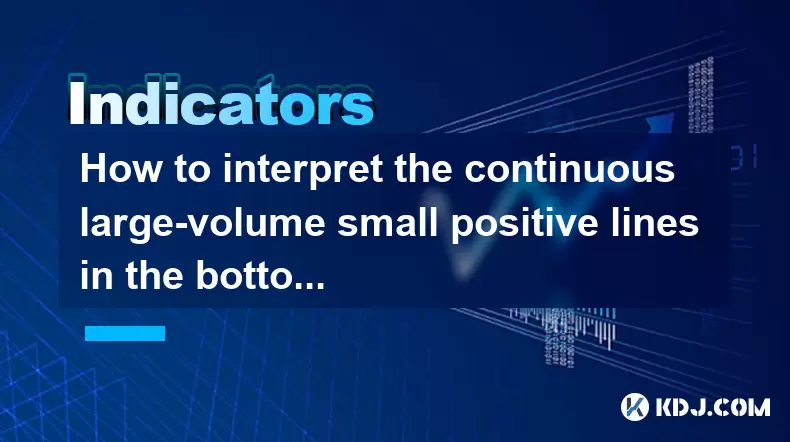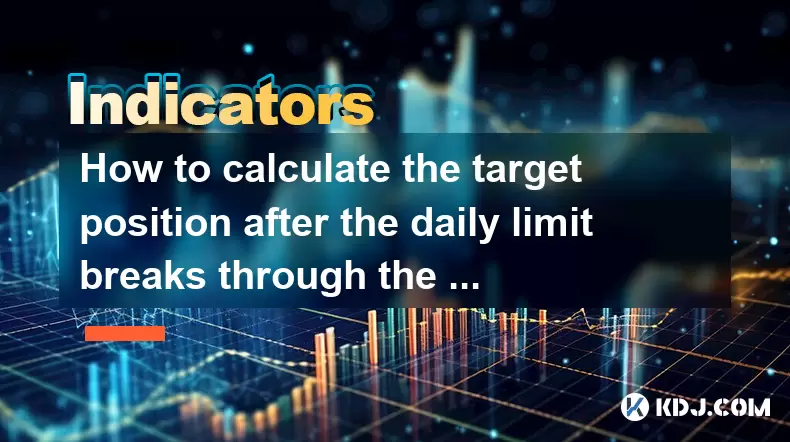-
 Bitcoin
Bitcoin $101,898.5005
-0.75% -
 Ethereum
Ethereum $2,258.1125
-1.07% -
 Tether USDt
Tether USDt $1.0004
0.01% -
 XRP
XRP $2.0178
-2.93% -
 BNB
BNB $624.0243
-1.53% -
 Solana
Solana $134.3298
-0.90% -
 USDC
USDC $0.9999
0.01% -
 TRON
TRON $0.2675
-2.05% -
 Dogecoin
Dogecoin $0.1538
-1.96% -
 Cardano
Cardano $0.5482
-1.11% -
 Hyperliquid
Hyperliquid $35.5636
5.45% -
 Bitcoin Cash
Bitcoin Cash $453.4902
-1.66% -
 Sui
Sui $2.5134
-2.97% -
 UNUS SED LEO
UNUS SED LEO $9.1292
1.77% -
 Chainlink
Chainlink $11.8457
-1.60% -
 Stellar
Stellar $0.2312
-2.73% -
 Avalanche
Avalanche $16.9721
0.29% -
 Toncoin
Toncoin $2.7549
-3.82% -
 Shiba Inu
Shiba Inu $0.0...01081
-1.10% -
 Litecoin
Litecoin $80.8250
-0.71% -
 Hedera
Hedera $0.1374
0.21% -
 Monero
Monero $305.4827
-2.36% -
 Ethena USDe
Ethena USDe $1.0006
0.00% -
 Dai
Dai $1.0000
-0.01% -
 Polkadot
Polkadot $3.2085
-3.12% -
 Bitget Token
Bitget Token $4.0845
-3.13% -
 Uniswap
Uniswap $6.3353
-1.63% -
 Pi
Pi $0.5085
-0.70% -
 Pepe
Pepe $0.0...08913
-3.82% -
 Aave
Aave $232.7090
-0.58%
How to set VWAP parameters Does it need to be adjusted for different periods
Correctly setting VWAP parameters is vital for crypto traders to make informed decisions; adjustments depend on trading strategy and cryptocurrency volatility.
May 26, 2025 at 02:08 am

Setting the Volume Weighted Average Price (VWAP) parameters correctly is crucial for traders who rely on this indicator to make informed decisions in the cryptocurrency market. VWAP is a trading benchmark used by investors to determine the average price a security has traded at throughout the day, based on both volume and price. It is particularly useful in assessing the liquidity and market trends of various cryptocurrencies. In this article, we will explore how to set VWAP parameters and whether they need to be adjusted for different periods.
Understanding VWAP and Its Importance in Cryptocurrency Trading
VWAP is calculated by taking the total dollar amount of all trading periods and dividing it by the total trading volume for the same period. The formula for VWAP is as follows:
[ \text{VWAP} = \frac{\sum (P_i \times V_i)}{\sum V_i} ]
Where:
- ( P_i ) is the price of the trade.
- ( V_i ) is the volume of the trade.
In the context of cryptocurrency trading, VWAP helps traders identify potential entry and exit points. If the price of a cryptocurrency is above the VWAP, it is considered overvalued, and if it is below, it is considered undervalued. This can guide traders in making buy or sell decisions.
Setting Up VWAP Parameters on Trading Platforms
To set up VWAP parameters on a trading platform, follow these steps:
- Choose a Trading Platform: Select a platform that supports VWAP, such as TradingView, MetaTrader, or a specific crypto exchange's trading interface.
- Access the Indicator Menu: Navigate to the indicators or tools section of the platform.
- Add VWAP to Your Chart: Search for VWAP in the indicator list and add it to your chart.
- Adjust the Time Frame: Set the time frame for which you want the VWAP to be calculated. Common time frames include 1 minute, 5 minutes, 15 minutes, 1 hour, and 1 day.
- Customize the Appearance: You can change the color and style of the VWAP line to better fit your chart's visual setup.
Adjusting VWAP Parameters for Different Periods
The need to adjust VWAP parameters for different periods depends on the trading strategy and the specific cryptocurrency being traded. Here are some considerations:
- Short-Term Trading: For day traders or those engaging in short-term trading, adjusting the VWAP to shorter time frames (e.g., 1 minute, 5 minutes) can provide more granular insights into intraday price movements.
- Long-Term Trading: For investors looking at longer-term trends, setting the VWAP to longer time frames (e.g., 1 hour, 1 day) can help in understanding broader market movements and identifying more significant support and resistance levels.
- Volatility and Liquidity: Cryptocurrencies with high volatility and liquidity may require more frequent adjustments to VWAP parameters to capture rapid price changes accurately.
Practical Example: Adjusting VWAP for Bitcoin Trading
Let's consider a practical example of adjusting VWAP parameters for trading Bitcoin (BTC).
- Short-Term Trading Example: If you are trading Bitcoin on a 5-minute chart, you would set the VWAP to a 5-minute time frame. This allows you to see the average price of Bitcoin over each 5-minute period and make quick trading decisions based on whether the current price is above or below the VWAP.
- Long-Term Trading Example: For a longer-term analysis, you might set the VWAP to a 1-day time frame. This would give you a daily VWAP line, helping you to identify whether Bitcoin is overvalued or undervalued over the course of a day.
Using VWAP in Conjunction with Other Indicators
While VWAP is a powerful tool on its own, it can be even more effective when used in conjunction with other technical indicators. Here are some common combinations:
- Moving Averages: Combining VWAP with moving averages can help confirm trends. If the VWAP is above a moving average, it may indicate a bullish trend, and vice versa.
- Relative Strength Index (RSI): Using RSI alongside VWAP can help identify overbought or oversold conditions. If the price is above VWAP and the RSI is above 70, it might signal an overbought condition.
- Bollinger Bands: Bollinger Bands can provide additional context on volatility. If the price is above VWAP and the upper Bollinger Band, it might indicate a strong bullish trend.
Case Study: VWAP in Action with Ethereum
To illustrate how VWAP can be used in real trading scenarios, let's look at a case study involving Ethereum (ETH).
- Scenario: You are trading Ethereum on a 1-hour chart. You set the VWAP to a 1-hour time frame and observe that the price of Ethereum is consistently trading above the VWAP line.
- Analysis: This suggests that Ethereum is currently overvalued. You decide to wait for the price to drop below the VWAP before considering a buy position.
- Outcome: Over the next few hours, the price of Ethereum indeed drops below the VWAP. You enter a long position, and as the price rebounds, you exit the trade with a profit.
Technical Considerations and Limitations of VWAP
While VWAP is a valuable tool, it has its limitations and technical considerations that traders should be aware of:
- Resetting Daily: VWAP resets at the start of each trading day. This means that if you are using a daily VWAP, you will need to adjust your parameters daily.
- Lag in Calculation: VWAP is a lagging indicator, meaning it reflects past price and volume data. This can sometimes lead to delayed signals.
- Sensitivity to Volume: VWAP is highly sensitive to volume. In markets with low volume, the VWAP can be less reliable.
Implementing VWAP in Automated Trading Systems
For traders who use automated trading systems, implementing VWAP can enhance their strategies. Here's how to integrate VWAP into an automated system:
- Choose an Automated Trading Platform: Platforms like MetaTrader 4 or 5, NinjaTrader, or custom-built systems can support VWAP integration.
- Code the VWAP Calculation: If you are building a custom system, you will need to code the VWAP calculation based on the formula provided earlier.
- Set Up Trading Rules: Define trading rules based on VWAP. For example, buy when the price crosses above the VWAP and sell when it crosses below.
- Backtest and Optimize: Use historical data to backtest your VWAP-based strategy and optimize the parameters for better performance.
Frequently Asked Questions
Q: Can VWAP be used for all cryptocurrencies?
A: Yes, VWAP can be used for all cryptocurrencies, but its effectiveness can vary based on the liquidity and volatility of the specific cryptocurrency. For less liquid cryptocurrencies, VWAP may be less reliable due to lower trading volumes.
Q: How often should I adjust the VWAP parameters?
A: The frequency of adjusting VWAP parameters depends on your trading strategy. For short-term trading, you might need to adjust the parameters more frequently, such as every few minutes or hours. For long-term trading, adjustments might be needed daily or weekly.
Q: Is VWAP suitable for scalping strategies?
A: VWAP can be used for scalping, especially when set to very short time frames like 1-minute or 5-minute charts. However, due to its lagging nature, it might not be the best standalone tool for scalping and is often used in conjunction with other indicators.
Q: Can VWAP be used to predict future price movements?
A: VWAP is a lagging indicator and is not designed to predict future price movements. It is best used to assess current market conditions and make informed trading decisions based on past data.
Disclaimer:info@kdj.com
The information provided is not trading advice. kdj.com does not assume any responsibility for any investments made based on the information provided in this article. Cryptocurrencies are highly volatile and it is highly recommended that you invest with caution after thorough research!
If you believe that the content used on this website infringes your copyright, please contact us immediately (info@kdj.com) and we will delete it promptly.
- XRP Rally Meets Neo Pepe Presale: A Meme Coin Revolution?
- 2025-06-23 17:05:13
- Coin-Op Comeback: Arcade Bars, Stern, and a Director's New Venture
- 2025-06-23 16:45:12
- XRP in Japan: From Community Day Tacos to Payment Sector Transformation
- 2025-06-23 17:05:13
- LILPEPE Presale Frenzy: The Meme Coin Revolution is Here, Ya'll!
- 2025-06-23 16:45:12
- Bitcoin Crash Incoming? Kiyosaki Bets Big on Silver Amidst Global Uncertainty
- 2025-06-23 17:25:11
- Dogecoin, Meme Coins, Price Prediction: Riding the Bullish Wave?
- 2025-06-23 17:25:11
Related knowledge

Is the high opening and low closing and huge volume the next day a trap for more?
Jun 23,2025 at 05:07pm
Understanding High Opening and Low Closing with Huge VolumeWhen traders observe a high opening followed by a low closing and massive volume the next day, it often raises concerns about whether this is a trap set by larger players in the market. This pattern typically indicates strong volatility within a short period, which can confuse retail investors. ...

How to interpret the MACD's second golden cross on the water but insufficient volume?
Jun 23,2025 at 05:01pm
Understanding the MACD Indicator and Its SignificanceThe Moving Average Convergence Divergence (MACD) is a widely used technical analysis tool in cryptocurrency trading. It helps traders identify potential buy or sell signals by showing the relationship between two moving averages of an asset’s price. The MACD line, signal line, and histogram are the th...

How much volume is required for the W-bottom to break through the neckline of the time-sharing chart?
Jun 23,2025 at 04:21pm
Understanding the W-Bottom Pattern in Cryptocurrency TradingThe W-bottom pattern is a popular technical analysis formation used by traders to identify potential bullish reversals. It typically appears at the end of a downtrend and resembles the letter 'W' on price charts. In the context of cryptocurrency trading, where volatility is high and trends shif...

How to interpret the continuous large-volume small positive lines in the bottom area?
Jun 23,2025 at 04:43pm
Understanding the Basics of 'Large-Volume Small Positive Lines'In technical analysis, especially within the cryptocurrency market, the pattern known as 'large-volume small positive lines' refers to a scenario where the price increases slightly (small positive candlestick) but is accompanied by unusually high trading volume. This phenomenon typically occ...

How to read the sideways consolidation after the bottom volume and long positive line?
Jun 23,2025 at 02:28pm
Understanding the Sideways ConsolidationWhen analyzing cryptocurrency charts, sidewards consolidation refers to a phase where prices move within a narrow range without a clear upward or downward trend. This pattern often appears after significant price movements, such as a sharp increase followed by a period of equilibrium between buyers and sellers. In...

How to calculate the target position after the daily limit breaks through the previous high?
Jun 23,2025 at 02:57pm
Understanding the Daily Limit BreakthroughIn cryptocurrency trading, a daily limit typically refers to the maximum price movement allowed within a single trading day on certain exchanges. When this limit is breached, especially when it surpasses the previous high, traders often seek to calculate the target position or expected price movement following s...

Is the high opening and low closing and huge volume the next day a trap for more?
Jun 23,2025 at 05:07pm
Understanding High Opening and Low Closing with Huge VolumeWhen traders observe a high opening followed by a low closing and massive volume the next day, it often raises concerns about whether this is a trap set by larger players in the market. This pattern typically indicates strong volatility within a short period, which can confuse retail investors. ...

How to interpret the MACD's second golden cross on the water but insufficient volume?
Jun 23,2025 at 05:01pm
Understanding the MACD Indicator and Its SignificanceThe Moving Average Convergence Divergence (MACD) is a widely used technical analysis tool in cryptocurrency trading. It helps traders identify potential buy or sell signals by showing the relationship between two moving averages of an asset’s price. The MACD line, signal line, and histogram are the th...

How much volume is required for the W-bottom to break through the neckline of the time-sharing chart?
Jun 23,2025 at 04:21pm
Understanding the W-Bottom Pattern in Cryptocurrency TradingThe W-bottom pattern is a popular technical analysis formation used by traders to identify potential bullish reversals. It typically appears at the end of a downtrend and resembles the letter 'W' on price charts. In the context of cryptocurrency trading, where volatility is high and trends shif...

How to interpret the continuous large-volume small positive lines in the bottom area?
Jun 23,2025 at 04:43pm
Understanding the Basics of 'Large-Volume Small Positive Lines'In technical analysis, especially within the cryptocurrency market, the pattern known as 'large-volume small positive lines' refers to a scenario where the price increases slightly (small positive candlestick) but is accompanied by unusually high trading volume. This phenomenon typically occ...

How to read the sideways consolidation after the bottom volume and long positive line?
Jun 23,2025 at 02:28pm
Understanding the Sideways ConsolidationWhen analyzing cryptocurrency charts, sidewards consolidation refers to a phase where prices move within a narrow range without a clear upward or downward trend. This pattern often appears after significant price movements, such as a sharp increase followed by a period of equilibrium between buyers and sellers. In...

How to calculate the target position after the daily limit breaks through the previous high?
Jun 23,2025 at 02:57pm
Understanding the Daily Limit BreakthroughIn cryptocurrency trading, a daily limit typically refers to the maximum price movement allowed within a single trading day on certain exchanges. When this limit is breached, especially when it surpasses the previous high, traders often seek to calculate the target position or expected price movement following s...
See all articles
























































































